Want To Adopt An 800 Year Old Rice Paddy? The Charm Of Oyama Senmaida

Oyama Senmaida in Chiba prefecture is one of Japan's famous terraced rice fields. A unique rice field adoption system makes it possible to for individual owners to take care of these rice fields and help preserve traditional rural farming.
While the southern part Chiba prefecture known as the Boso Peninsula is recognized for its beautiful beaches, there is much more to explore especially within the Kamogawa region. This area is probably best known for the Kamogawa Seaworld located in central Kamogawa along the Pacific coast. However, a much less visited and known area is the Nagasa-Oyama area, a 30 minute bus ride west from Kamogawa Station.
Oyama Senmaida - Chiba's Beautiful Terraced Rice Paddies
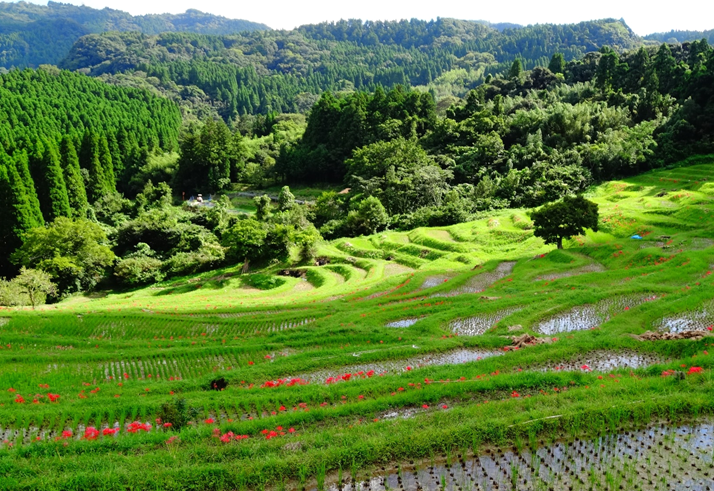
Oyama Senmaida Terraced Rice Fields in late September with the Higanbana (Red Spider Lily) blossoming which signals the coming of autumn harvest.
Nagasa rice, one of the most delicious and famous rice brands of Chiba Prefecture, is grown in Oyama-Senmaida terraced rice fields in the Nagasa Valley. Oyama-Senmaida (literally "one-thousand terraced rice fields") has been selected as one Japan’s hundred famous terraced rice fields and has an 800-year old history dating back to the Kamakura period (1185-1333) of raising some the most delicious rice in Chiba prefecture. Harvested rice was transported along the Nagasa Road to consumers in Edo (former name of Tokyo). The Nagasa Road, or Highway 34, runs from Kamogawa city to Hota city on the shore of Tokyo Bay.
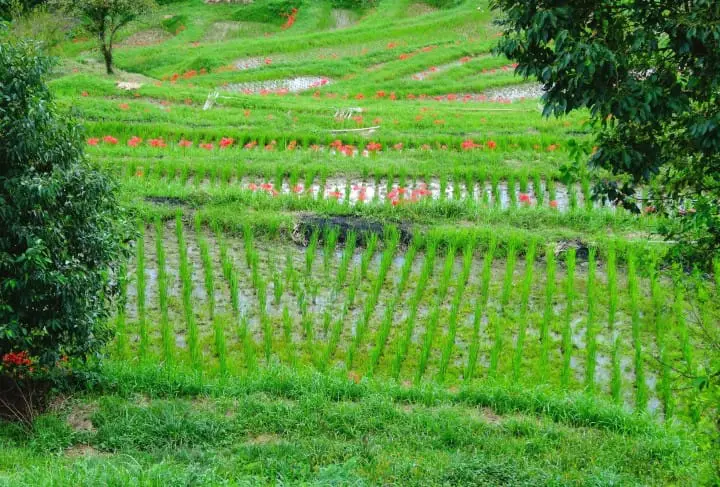
While the name implies one thousand fields, there are actually 375 rice paddies of various sizes terraced up gently sloping hills. No matter what season you visit, the scene is impressive with terraced paddies of various size surrounded by hills and mountains.
Besides the stunning views, another surprising fact about the Oyama-Senmaida rice paddies is that rainfall is relied on for growing rather than a network of irrigation channels as is common throughout Japan. Since there are no high mountains, water could not be trapped and stored. In fact, the highest peak in Chiba, Mt. Atago, is only 408 meters and located adjacent to Oyama-Senmaida. After planting, the rice fields depend solely on rainfall, especially during the rainy season in June.
However, with climate change and accompanying seasonal variations in weather conditions, it’s been difficult to guarantee necessary rainfall at the precise time. In the past, during the long rainy spell between late March and an April known as “Natane Baiu” rainfall was sufficient and collected in the rice paddies.
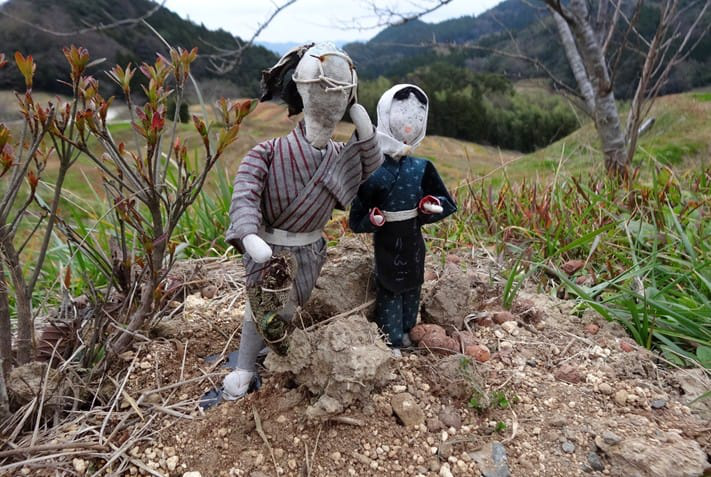
Another interesting aspect of the Oyama-Senmaida is the heavy clayish texture of the soil which is unsuitable for other agricultural products. While the earth yields delicious rice it also requires grueling manual labor to prepare the rice paddies for planting.
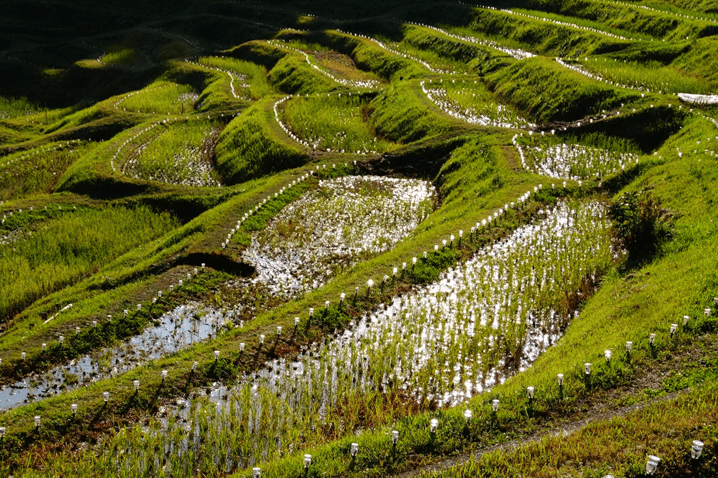
Oyama-Senmaida in mid-November with solar powered lights for a beautiful nighttime display
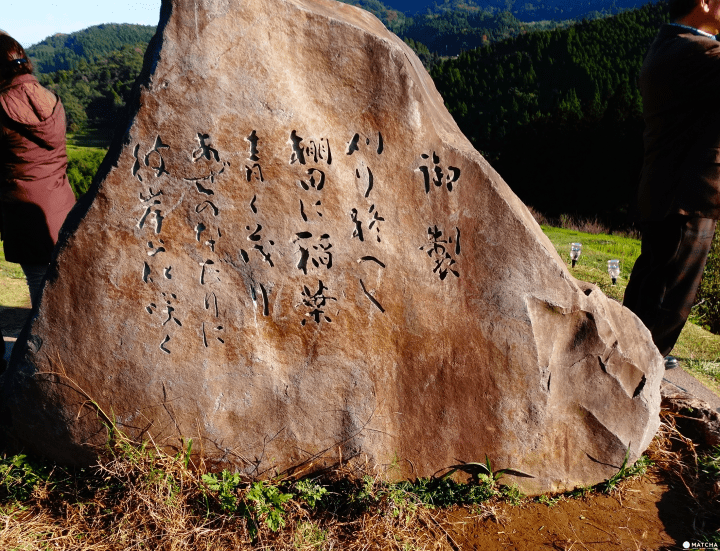
Stone commemorating the visit of the Emperor and Empress.
The Emperor and Empress visited Oyama-Senmaida in September 2010 and to commemorate his visit the Emperor composed the following poem which is inscribed on a stone overlooking the rice fields. Roughly translated:
- Weeding is done,
the rice of Tanada is an emerald green,
between the paddies the Higanbana blossoms.
“My Tanbo” - Seeking Persons Who Want To Plant and Harvest Their Rice
With the demographic changes in Japan’s countryside, rural areas have devised unique campaigns to attract younger persons living in the cities back and experience farming first hand. In 2000 the NGO “Oyama Senmaida Preservation Society” established the “Owner’s System” to support and maintain the rice fields in the area. Under the owner system, interested persons submit an application to become an “owner” of “My Tanbo” ('tanbo' means 'rice field'). Individuals are actually “adopting” one of the small rice paddies.
However, if applications exceed the number of fields available, then persons are chosen by lottery. In 2017, 154 applications will be selected for the Oyama-Senmaida fields. The “Owners” mainly participate in the spring planting, weeding and fall harvest and while local farmers oversee the fields on a weekly basis. “Owners” usually receive about 40 kilograms of the harvested rice.
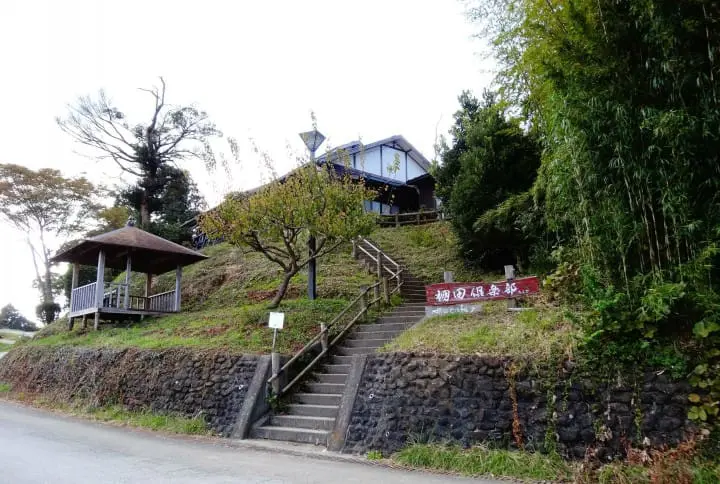
The Tanada Club building houses the NGO Oyama-Senmaida Preservation Society and the Tanada Trust offices.
The Oyama-Senmaida Preservation Society also oversees the Tanada Trust that was established with the goal to slowing the abandonment of cultivated rice fields, preserving neighboring villages and providing adults and children living in metropolitan areas hands-on farming experiences such as plowing, rice planting, weeding, harvesting and threshing. The cost to become a member of the trust and participate is 30,000 - 40,000 yen. In addition to the Oyama Senmaida fields, there are four other rice areas seeking persons to be an “owner” making the total number applications for owners 329.
The Owner Adoption System and the “My Tanbo” program have greatly helped in preventing the further abandonment of local rice fields; however, if you are considering being an “owner participant” be ready for some backbreaking labor that starts in March with field preparation, rice planting during Golden Week, weeding from June-September, harvesting in early-mid September and the harvest festival in early October. Incidentally, in 2002 Oyama Senmaida was recognized as a “cultural landscape” and also designated as a Chiba Prefectural Landmark.
Enjoy Your Visit of the Oyama Senmaida!
You can enjoy lunch at a traditional Japanese house that was transformed into a small restaurant called “Gonbei” which opened in April 2016. Located next to the Tanada Club house, Gonbei serves dishes from 9:00 AM to 4:00 PM daily made from locally grown vegetables.
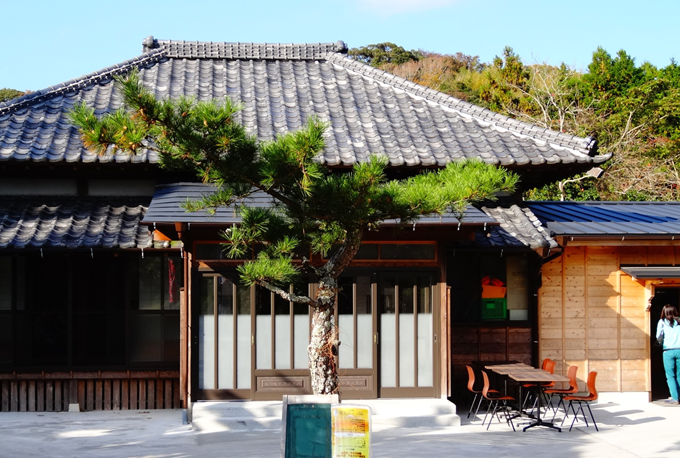
Gonbei - a traditional rural home transformed in a restaurant.
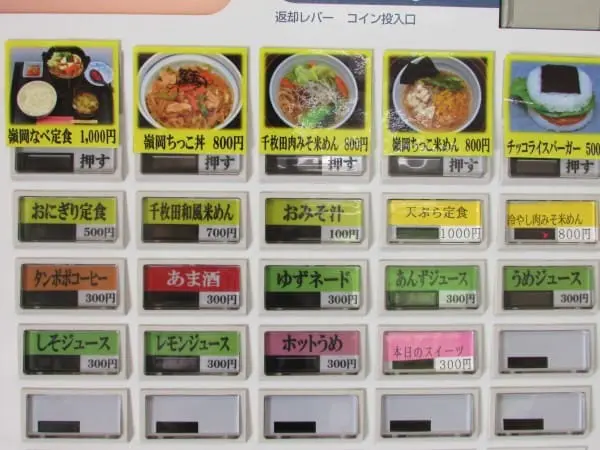
While not a wide menu selection, the Onigiri set meal (pictured below) was excellent, for only 500 Yen. It's the first selection on the second row on the self-service order menu above.
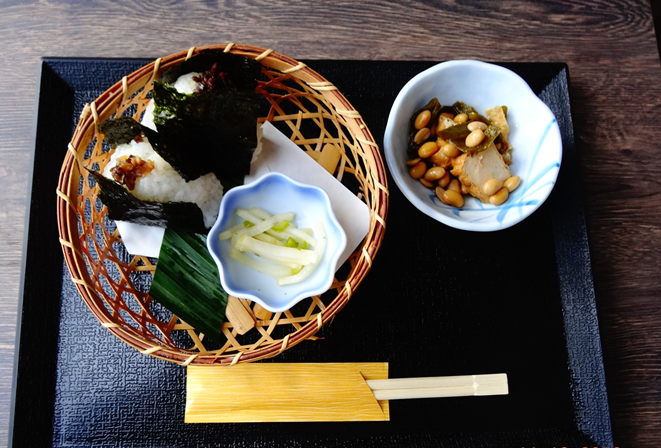
How To Get To Oyama-Senmaida
From Tokyo Station take the Sotobo Line bound for Awa-Kamogawa Station. The train ride takes 2 hours and 15 minutes and departs Tokyo every 40 minutes. From the east exit of JR Awa-Kamogawa Station board the city bus bound for Hiratsuka Hongo and get off at the Kamanuma bus stop (the 9th stop), a 30 minute ride. Walk in the same direction as the bus for about 150 meters and turn left on a small side road marked with a sign for Oyama Senmaida. Follow this small road uphill for about 1.5 km and in about 20-25 minutes you will soon see the terraced rice fields on the left.
The latest Kamogawa Nitto Bus Company schedule (October 2015):

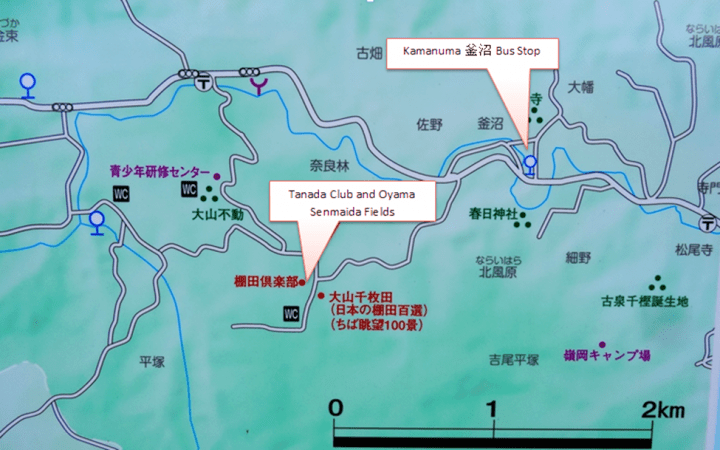
Map showing the nearest bus stop to the Oyama-Senmaida fields.
Other Sites of Interest Nearby Oyama Senmaida
Kameda Sake Brewery (Kameda Shuzo): A well-known, respected local sake brewery that has been brewing sake for over 255 years. It is about 10-15 minute walk east from the Kamanuma bus spot along the Nagasa Highway 34.
Oyama Fudo-son Temple: Located about 10-15 minute walk west from the Gonbei Resturant, the temple was supposedly built in the Nara Period (710 - 794). After passing through the temple gate and climbing the 45 steep steps you’ll be able to enjoy a fantastic view of the Nagasa Valley all the way to Kamogawa and the Pacific Ocean.
Minami no Sato: A market and community center located south of the intersection of Highway 410 and the Nagasa Highway 34. Local crafts and produce are sold and depending on the season various hands-on activities are held. Besides selling local goods, there a restaurant, souvenirs, and information counter.
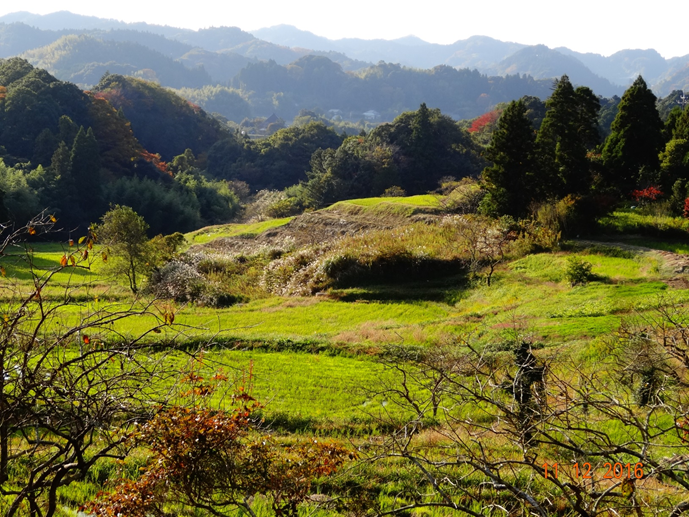
Beautiful landscape views surrounding the Oyama-Senmaida fields.
The Oyama Senmaida area is a great destination for a one day trip from Tokyo. The wonderful view of the rice paddies is a chance to take in the charm of rural Japan, and who knows, you might want to adopt one and take care of it yourself!








































![[2026] Top 5 Strawberry Picking Spots in Tokushima, Naruto| Farms and Access Guide for January to May](https://resources.matcha-jp.com/resize/720x2000/2025/03/06-227165.webp)
![[Yamanashi/ Hokuto City] 4 Hot New Spots Opening in 2026](https://resources.matcha-jp.com/resize/720x2000/2025/12/12-252747.webp)


